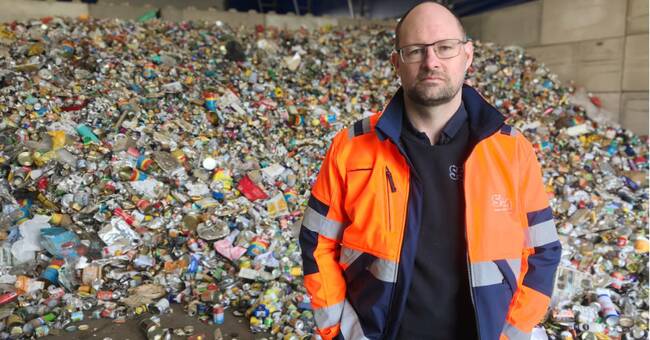At Häringetorp's recycling center outside Växjö, the garbage trucks drive into a fighting stream.
They dump newsprint on an already growing mountain of other newsprint, and old bananas and potatoes to a plant where food waste is later turned into biogas.
- We call it the slurry mix, says the unit manager at SSAM, Mattias G Sandahl, and points to the food waste facility.
Residual waste has decreased
In total, 32,000 households have switched from ordinary rubbish bins to regular sorting directly in the rubbish bin in just over a year.
Residents in the municipalities of Lessebo, Tingsryd, Markaryd, Älmhult and Växjö received the four-compartment vessels.
- It is very well sorted, people are generally good, says Mattias G Sandahl.
In the four-compartment bins, households can sort colored and uncoloured glass, metal, cardboard, plastic, food waste and residual waste.
- We have reduced residual waste by up to 30 percent in many municipalities, says the unit manager at SSAM, Mattias G Sandahl.
Incorrect sorting costs several hundred bucks
But there are also households that have mismanaged their waste sorting.
Since the turn of the year, SSAM has received 70 reported deviations.
During emptying, the drivers at SSAM must inspect the contents based on what is seen when they open the bins.
If the waste is severely incorrectly sorted or if any hazardous waste is seen, the container is left empty with a message on the dustbin.
- The customer can then order an extra emptying which is performed for a fee, writes Susanna Henningsson, communicator at SSAM, to SVT.
The fee for an extra emptying is just over SEK 170, depending on the municipality.
If the household continues to incorrectly sort rubbish, the fee will be increased to SEK 300 per occasion.
Fyrfackskärlen a successful project
Already in 2019, the four-compartment vessels were introduced in Tingsryd and Lessebo, and the following year Växjö, Älmhult and Markaryd followed.
Now the project is approaching the final phase where the holiday homes are last out.
Mattias G Sandahl at SSAM has followed the transition to the lighthouses and is not surprised at how well the project turned out.
- On the whole, I think you are well aware that what ends up in the vessels will be recycled and become something new, he says.

